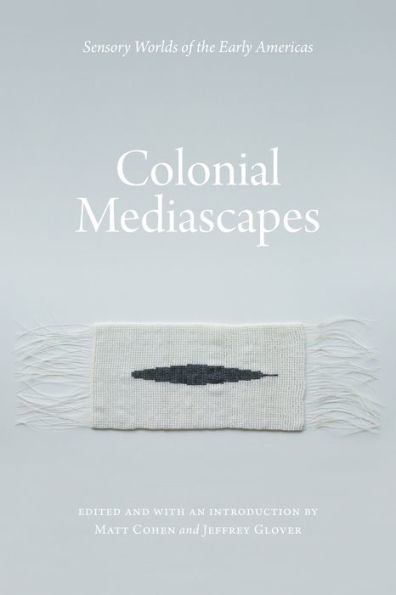
Colonial Mediascapes: Sensory Worlds of the Early Americas
456
Colonial Mediascapes: Sensory Worlds of the Early Americas
456Paperback
-
PICK UP IN STORECheck Availability at Nearby Stores
Available within 2 business hours
Related collections and offers
Overview
Colonial Mediascapes examines how textual and nontextual literatures interacted in colonial North and South America. Extending the textual foundations of early American literary history, the editors bring a wide range of media to the attention of scholars and show how struggles over modes of communication intersected with conflicts over religion, politics, race, and gender. This collection of essays by major historians, anthropologists, and literary scholars demonstrates that the European settlement of the Americas and European interaction with Native peoples were shaped just as much by communication challenges as by traditional concerns such as religion, economics, and resources.

Product Details
| ISBN-13: | 9780803249998 |
|---|---|
| Publisher: | Nebraska Paperback |
| Publication date: | 04/01/2014 |
| Pages: | 456 |
| Product dimensions: | 6.00(w) x 8.90(h) x 1.10(d) |
About the Author
Contributors: Ralph Bauer, Heidi Bohaker, Galen Brokaw, Jon Coleman, Jeffrey Glover, Peter Charles Hoffer, Andrew Newman, Birgit Brander Rasmussen, Richard Cullen Rath, Sarah Rivett, Gordon M. Sayre, and Germaine Warkentin.
Table of Contents
List of Illustrations ix
Foreword Paul Chaat Smith xi
Acknowledgments xiii
Introduction Matt Cohen Jeffrey Glover 1
Part I Beyond Textual Media
1 Dead Metaphor or Working Model? "The Book" in Native America Germaine Warkentin 47
2 Early Americanist Grammatology: Definitions of Writing and Literacy Andrew Newman 76
3 Indigenous Histories and Archival Media in the Early Modern Great Lakes Heidi Bohaker 99
Part II Multimedia Texts
4 The Manuscript, the Quipu, and the Early American Book; Don Felipe Guaman Poma de Ayala's Nueva Corónica y Buen Gobierno Birgit Brander Rasmussen 141
5 Semiotics, Aesthetics, and the Quechua Concept of Quilca Galen Brokaw 166
6 "Take My Scalp, Please!": Colonial Mimesis and the French Origins of the Mississippi Tall Tale Gordon M. Sayre 203
Part III Sensory New Worlds
7 Brave New Worlds: The First Century of Indian-English Encounters Peter Charles Hoffer 233
8 Howls, Snarls, and Musket Shots: Saying "This Is Mine" in Colonial New England Jon Coleman 266
9 Hearing Wampum: The Senses, Mediation, and the Limits of Analogy Richard Cullen Rath 290
Part IV Transatlantic Mediascapes
10 Writing as "Khipu": Titu Cusi Yupanqui's Account of the Conquest of Peru Ralph Bauer 325
11 Christian Indians at War: Evangelism and Military Communication in the Anglo-French-Native Borderlands Jeffrey Glover 357
12 The Algonquian Word and the Spirit of Divine Truth: John Eliot's Indian Library and the Atlantic Quest for a Universal Language Sarah Rivett 376
Contributors 409
Index 413
